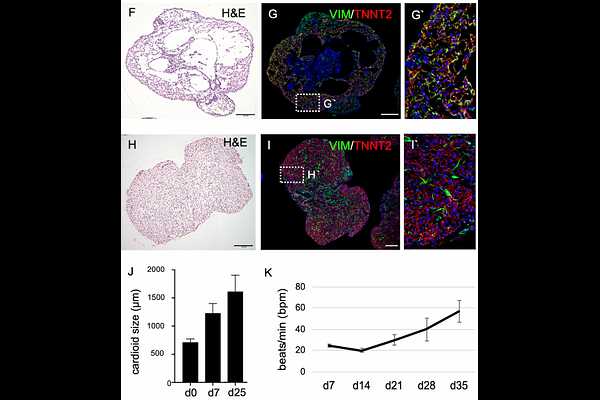Tissue resident macrophages innately develop in a human iPSC-derived cardiac organoid model

Tissue resident macrophages innately develop in a human iPSC-derived cardiac organoid model
Rockel, A. F.; Brunnbauer, T.; Wagner, N.; Gerull, B.; Erguen, S.; Woersdoerfer, P.
AbstractThe heart is the first functional organ to develop during embryogenesis, forming in parallel with the vasculature and hematopoietic cell lineages. To advance our understanding of human cardiac development and disease, human induced pluripotent stem cell-derived cardiomyocytes offer a promising in vitro model. However, conventional 2D culture systems lack the complexity required to recapitulate the intricate interactions of different cell types leading to fully functional and mature cardiac tissue. Here, we present a cardiac organoid model that mimics several aspects of cardiogenesis. The cardiac organoids develop a complex tissue architecture, including functional myocardium consisting of cardiomyocytes and fibroblasts capable of spontaneous rhythmic contractions. The myocardium is interspersed with a branched endothelial network. Additionally, macrophages develop within the organoids and integrate into the myocardium. In summary, we describe a complex 3D cell culture platform to study human heart tissue development with all the involved cell types (cardiomyocytes, fibroblasts, endothelial cells, macrophages), paving the way for new insights into the role of macrophages in cardiac development and disease.